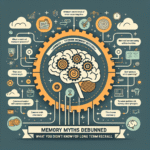
Introduction
Sound is an omnipresent force that shapes our perception of the world around us. From the gentle rustle of leaves to the thunderous roar of a jet engine, our ability to perceive sound is a cornerstone of human experience. Yet, how often do we reflect on the intricate science behind this sensory phenomenon? In "Breaking Down Sound: Understanding the Science of Auditory Perception," we delve deep into the fascinating world of sound waves, the anatomy of hearing, and the complex processes that allow us to interpret auditory stimuli.
Understanding auditory perception is not merely an academic exercise; it has profound implications in various fields such as education, audiology, and even artificial intelligence. Whether you’re a student, a professional in a related field, or just an inquisitive mind, this exploration will equip you with valuable insights into how we perceive sound and its significance in our lives.
The Anatomy of Sound
1. What is Sound?
At its core, sound is a vibration that travels through a medium—usually air—creating waves that we perceive with our auditory system. These sound waves are characterized by properties such as frequency (pitch), amplitude (loudness), and timbre (quality).
Frequency and Pitch
- Frequency: Measured in hertz (Hz), this refers to the number of vibrations per second. A higher frequency corresponds to a higher pitch.
| Frequency Range | Description |
|---|---|
| 20 Hz – 200 Hz | Bass sounds |
| 200 Hz – 2000 Hz | Mid-range sounds |
| 2000 Hz – 20,000 Hz | Treble sounds |
Amplitude and Loudness
- Amplitude: This is the height of the sound wave, determining its loudness. Higher amplitudes result in louder sounds.
2. The Journey of Sound
Sound travels in waves through various mediums. Initially, the sound waves cause vibrations in air molecules, which then travel to the ear. This journey is critical for our auditory perception.
The Ear Structure
- Outer Ear: Captures sound waves.
- Middle Ear: Amplifies sound via the eardrum and ossicles (tiny bones).
- Inner Ear: Converts vibrations into neural signals through the cochlea.
Understanding Auditory Perception
3. How Do We Hear?
When sound waves enter the ear, they pass through three stages: mechanical, hydraulic, and electrical.
Mechanical Stage
Sound waves vibrate the eardrum, which moves the ossicles. This amplification is crucial to transforming faint sounds into perceivable ones.
Hydraulic Stage
The movement of the ossicles creates waves in the fluid of the cochlea, where hair cells are stimulated. Each hair cell corresponds to a specific frequency.
Electrical Stage
Once stimulated, hair cells send electrical impulses to the auditory cortex via the auditory nerve. This is where the interpretation of sound occurs, allowing us to recognize speech, music, and environmental sounds.
4. The Psychology of Sound
Understanding how we interpret sound goes beyond anatomy to delve into psychology. Our brains process auditory information and relate it to memories, emotions, and context.
Case Study: The Mozart Effect
Research has shown that listening to classical music, particularly Mozart, may temporarily enhance cognitive functions. The complexity of sound in these compositions stimulates various areas of the brain, showcasing how auditory perception can influence mental performance.
The Real-World Implications of Auditory Perception
5. Applications in Technology
The principles of auditory perception have far-reaching implications in technology and design. Devices such as hearing aids, soundproofing materials, and even virtual assistants like Siri rely on our understanding of sound.
Table: Technologies Utilizing Auditory Perception
| Technology | Application |
|---|---|
| Hearing Aids | Amplifying sound for the hearing impaired |
| Noise-Canceling Headphones | Reducing background noise for clarity |
| Speech Recognition | Interpreting spoken language for commands |
6. Sound in Education
Educators are increasingly recognizing the role of sound in learning environments. Acoustic design in classrooms can significantly impact students’ focus and retention.
Case Study: Classroom Acoustics
A study found that classrooms with optimized acoustics improved student performance by 15%. This illustrates how sound quality can influence learning outcomes.
The Future of Auditory Research
7. Breaking Boundaries in Sound Research
As technology progresses, so does our understanding of sound. Ongoing research in auditory perception aims to improve AI algorithms for speech recognition, personalized audio experiences, and more.
The Role of AI in Auditory Perception
AI systems now analyze sound waves to create more realistic audio experiences in video games and virtual reality, enhancing immersion for users.
8. Soundscapes and Their Importance
Soundscapes— the acoustic environment as perceived by humans—are critical in urban planning, mental health, and our interaction with nature.
Case Study: Urban Soundscapes
Research indicates that improving the sound environment in cities can lead to higher levels of satisfaction among residents, showing the importance of auditory perception in urban design.
Conclusion
"Breaking Down Sound: Understanding the Science of Auditory Perception" provides an extensive look into how we perceive sound. By exploring the anatomy of hearing, the psychology behind sound interpretation, and the implications for technology and education, we’ve uncovered the profound impact sound has on our lives.
As we move forward, the evolution of our understanding will pave the way for innovative applications in every facet of society. Whether it’s enhancing educational experiences or designing cutting-edge auditory devices, the possibilities are endless. Embrace the soundscapes around you and appreciate the intricate science that makes auditory perception possible.
FAQs
1. What is the difference between pitch and loudness?
Pitch refers to the frequency of a sound wave, determining how "high" or "low" a sound is, while loudness is the amplitude of the sound wave, determining its volume.
2. How does aging affect hearing?
With age, structures within the ear may deteriorate, leading to conditions such as presbycusis, which affects the ability to hear higher frequencies.
3. Can sound be harmful?
Yes, exposure to loud sounds (over 85 decibels) can lead to hearing loss or tinnitus, emphasizing the importance of protecting your hearing.
4. What role does sound play in memory?
Sound can cue memories and emotions, often serving as a potent trigger for recollection, which is explored in fields like music therapy.
5. How can I improve my auditory perception?
Practicing active listening, minimizing background noise, and engaging with various sound environments can enhance auditory skills.
The exploration of sound is ongoing, and as we continue to understand its nuances, we unlock new potentials that can profoundly affect our daily lives.
















